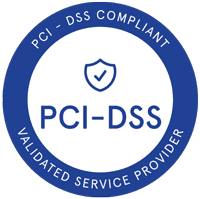Why your company needs penetration testing
Penetration tests are security health check-ups of your business. They help uncover potential weaknesses that can lead to leaks or breaches in your system and infrastructure.
During such tests, a dedicated and authorized security specialist (or a team of dedicated specialized security professionals) tries to penetrate whatever they are hired to stress-test. The pentester will look for weaknesses and potential exploits. The entire process also includes:
- Probing for vulnerabilities in software or IT infrastructures, such as frontend and backend servers and networks.
- Looking for potential flaws in the existing automatic security tools.
- Coming up with the exploits for the company products’ APIs.
Every year nearly 50% of all businesses experience at least one employee-caused security incident, and 74% of companies suffered due to purposeful malicious employee actions (source). Extended penetration tests include looking for employees who are careless with security or can potentially open the company’s infrastructure to a hacker on purpose.
Penetration tests are performed according to pre-defined scenarios based on standardized methods prescribed by applied security communities (OWASP, PTES, PSSTMM, NIST, etc.).
Penetration testing techniques
There are many penetration testing techniques. They are selected and combined based on the task at hand and the testing scope. For instance, if the main task is to test a website for vulnerabilities, the pentester will dedicate less attention to looking for exploits via “hacking” actual human employees through social engineering.
Here are the most typical penetration testing techniques used in a full-coverage pentest of an organization:
- Reconnaissance (footprinting) and target mapping – collecting of information from all possible sources. The pentester will try to learn as much information as possible to find a way to penetrate and exploit the system.
- Vulnerability scanning – the pentester will use automatic tools and a manual approach to scan the system for various security vulnerabilities.
- Exploit identification – the weaknesses in the system that can be exploited to the hacker’s advantage are identified and mapped out.
- Distributed denial-of-service attack (DDoS) – generating more requests to the critical network services like email servers, web hosting sites, etc., than the system can handle to cause an outage or escalate permissions. Usually reserved for non-production systems.
- Brute force – trying every possible method and combination of credentials and exploits to break into the system.
- Testing via injection – testing if malicious code injections are workable by testing with harmless samples. This might or might not include “fuzzing” – trying if unexpected input format or content can break entry fields on the externally-facing websites belonging to the infrastructure.
- Social engineering – attacks against employees or other people (like vendors) who have access to sensitive data. Pentesters pretend to be other employees, their boss, or even the police to trick the employees into providing them with access to the company’s internal infrastructure (for example, send their password or grant physical access to the company’s hardware).
The security company will choose the techniques that best suit the needs of your business. However, you need to make the most important decision here – the decision to carry out the penetration testing. Consider this to be a crucial security measure – like installing antivirus software – and not something that can be treated as an afterthought.
Running a pentest and implementing all the security recommendations provided by the external security specialists leads to more robust protection of sensitive business information. This way, it’s better protected from hackers, malicious actors, or other unauthorized personnel who want to access your company’s private data.
Penetration testing can also be an important factor in determining the levels of security and the proper tools a business needs to stay ahead of the potential threats. This makes penetration testing an excellent way of augmenting existing solutions and policies for any organization which wants to stay on top of their digital protection measures.
Penetration Test Strategies
Based on the needs of the business and the exact scenarios that require testing, appropriate penetration test strategies are selected and implemented by the security company. There are several methods available. These are the most commonly used penetration test strategies:
- Targeted testing: The tester and the security personnel of the company work together. Jointly, they create a list of target endpoints and systems and then draw up and follow a customized plan for testing the security of these targets.
- Internal testing: Internal penetration tests mimic an attacker’s actions when they already have made it inside the defenses, which results in a presumed security breach or service outage. This type of test aims to find out how the organization would fare against a malicious insider or an outsider that somehow obtained the necessary credentials and permissions to cause some serious harm. This approach either tests the existing incident response scenario or helps create one for the company based on the pentest results.
- External testing: External penetration tests target the company’s assets that are visible on the Internet or are accessible through other externally available sources – phone lines, faxes, smart devices, etc. It also includes social engineering.
- Blind testing: In blind testing, the pentester is given minimal data to start with. Only the existing security staff and top management who approved the pentesting are aware that testing occurs. This helps simulate the circumstances of a real-life attack – the attacker only uses what’s already available, and the staff knows nothing.
- Double-blind testing: The double-blind penetration test is the most advanced type of testing. It involves a secret assignment given to external security professional. Only a couple of people in the company are aware that there will be a pentesting. However, they still might be unaware of the exact time range when the hired white-hat hacker (the one working to find vulnerabilities to only disclose them to the client who hired them) will strike and how. When done correctly, extensive double-blind tests allow getting an accurate picture of the on-site security team’s abilities and preparedness to counter and/or mitigate attacks and data breaches. This also allows to battle-test the automatic security monitoring and protection systems in place, for example – WAFs.
- Black box testing: This approach is similar to Blind Testing, but in this case, the pentester is only working with what’s available in the public information and needs to find their own way in. The security staff is aware of the upcoming pentesting.
- Gray Box testing: A cross between black box testing and white box testing (see below). In this scenario, the pentester starts with some internal information. For example, they will know the company’s internal infrastructure. This allows modeling a situation when an attacker is silently present in the network, collecting the information, and waiting for the right time to strike.
- White Box testing: The tester is given all the information they need to know before conducting an attack. They have access to everything – system, source code, the work infrastructure, etc.
The 8 Phases of Penetration Testing
Penetration testing can be broken down into eight main phases. From initial information collection to providing reports and mediations, these phases include:
1. Planning and reconnaissance (information collection)
The planning and reconnaissance step is where the pentester is collecting the necessary information. It is also known as open-source intelligence or OSINT step and includes defining:
- which systems and networks will be tested
- the type of testing methods that will be used
- the information that will be necessary for the test and how to obtain it.
2. Scanning
The information gathered during the previous step is used for scanning the whole system to identify potential attack vectors. For instance, the pentester will check ports, services running on systems and networks, or operating system profiles.
Two stages of scanning include:
- Static analysis – where the system (or a particular software product) is scanned “as is” while it is off or idle.
- Dynamic analysis – where the testing is carried out on the system or software/service at work to provide insights into how the tested entity behaves in a real-life scenario.
The scanning phase does not include exploiting any discovered vulnerabilities or running tools to gain unauthorized access into a network or computer system. Instead, it’s more of a hands-on information collection and gentle poking of the box.
3. Vulnerability assessment & threat modeling
This two-stage phase helps identify the points in the infrastructure that can be exploited by attackers and map out the probability of related security breaches.
- During vulnerability assessment, the tester often looks for common vulnerabilities such as cross-site scripting (XSS), potentially workable SQL injections, known flaws in the third-party tools, etc.
- Risk assessment and threat modeling stage is where the tester identifies, examines, and prioritizes the threats found in the system according to how likely it is that a given vulnerability will result in a security breach and what the consequences might be.
The penetration tester usually approaches this stage with a pre-defined list of common vulnerabilities. However, sometimes the test will go beyond those initial targets to find potential hidden weaknesses or unforeseen errors.
Read also the difference between Penetration testing and Vulnerability Scanning.
4. Gaining access (break-in and exploitation)
In this phase, the tester is directly trying to exploit the system, perform privilege escalation, or extract valuable data. This process includes breaking into the system using the information collected during the previous stages.
5. Initial analysis and report
After breaking into the system and testing the incident response, the security specialist (or the team of such specialists that worked together on an all-around pentest) draws up a report and shares the findings with stakeholders.
The post-pentesing report contains the list of finds and provides extensive checklists with actionable steps, recommendations, and tools to mitigate and correct the discovered security flaws successfully.
If the pentester tested compliance with particular data privacy/security regulations (like GDPR or HIPAA), they will also provide a list of recommendations for reaching better compliance.
6. Utilization of the report
Taking action on the recommendations provided in the previous step usually falls on the shoulders of the internal security team/security officer. The on-site security staff needs to:
- study the report
- prioritize mitigation
- develop and carry out remediation plans.
7. Retest
Typically, this stage is separated from the previous one by days or even weeks. Retest only happens after the on-site security team has implemented the remediation steps and recommendations provided by the pentester. This also includes appropriate security training for other employees of the company.
After the remediation steps have been taken, the tester will rerun certain testing parts to verify that the identified vulnerabilities have been eliminated. If an identified vulnerability is still present, it will need to be remediated again. If new flaws surface due to incorrect implementation of the recommended measures, a new report is created, and another round of retests will follow.
8. Final report and attestation
The final report describes the state of systems’ security after the implementation of all the necessary remediation and security tightening measures. Final checklists for incident response scenarios and compliance with security regulations are provided by the pentester or the pentesting team to the company. In addition, the pentesting company provides an attestation letter to verify the successful result and the improved level of security of the company that underwent a pentesting.
If the company owners care about maintaining a high level of security, another pentest is pre-scheduled at this stage to take place in about a year (or after significant changes in the existing system infrastructure).
Conclusion
A penetration test is one of the best ways to find weaknesses in your system and prevent security-related issues before they even arise, saving you money and resources.
- Penetration tests take place over time and involve attacking an online environment from different angles using various strategies.
- Even though penetration testing is a comprehensive assessment of security, it is not disruptive or expensive. You can use penetration testing services as often as needed.
- For all the vulnerabilities and potential threats found during a penetration test, DruvStar will provide remediation recommendations and solutions. We will make sure you don’t have to worry about those problems persisting into the future.
You don’t have to take care of the testing and preventive security measures all by yourself or hire vast additional security staff. Instead, it is much better to outsource penetration testing to a specialized security company. At DruvStar, we can take care of the penetration testing for you.
If you would like to order penetration testing, need security assistance, or want to learn more about our cybersecurity services – contact DruvStar today!
Our experts are ready to help you with everything from developing a detailed strategy for getting started on your own assessment to executing it flawlessly. We have extensive experience in providing security assessments and penetration testing services to organizations of all sizes and different infrastructure complexity levels.
Get in touch with us now: DruvStar will help you take care of your security risks before they turn into security breaches.













